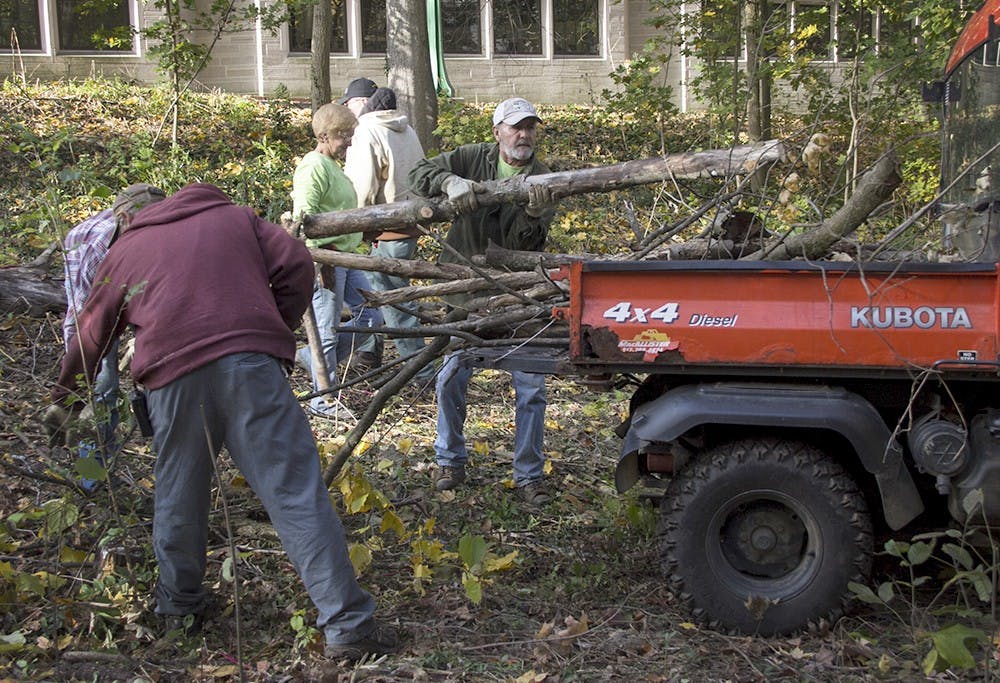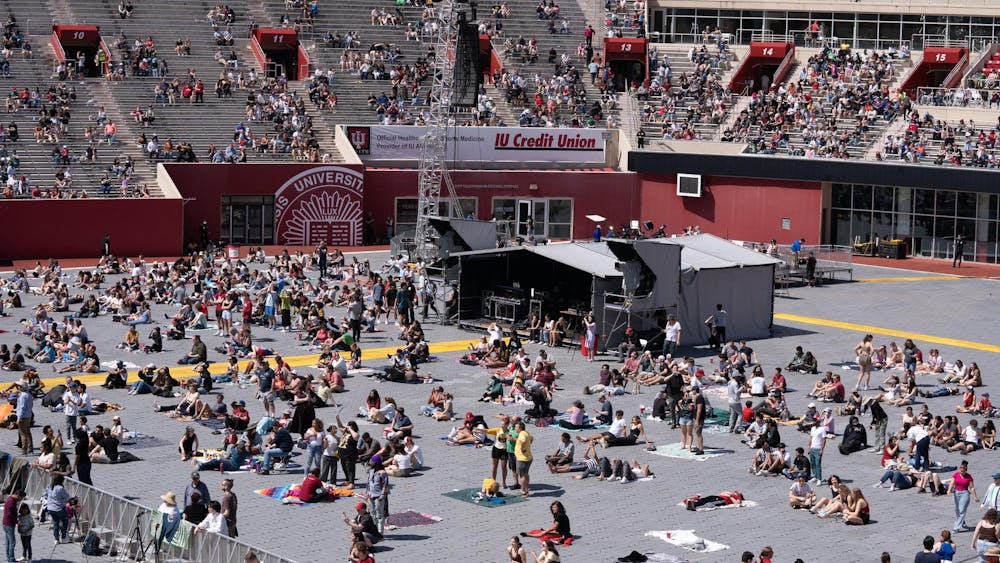A team of approximately 40 people cleaned up and planted 100 trees in Dunn’s Woods on Tuesday.
Mia Williams, the University landscape architect, said strong storms in the winter of 2011 disrupted the canopy of the woods.
“That has encouraged a bunch of different types of plants that wouldn’t normally grow in a forest to grow and really cause ?problems,” she said.
Without the use of chemicals, workers pulled invasive species from the ground Tuesday morning.
The invasive plants the workers focused on removing included euonymus, Canadian thistle and ?pokeweed.
Williams described euonymus as an evergreen plant that creeps along the ground and chokes out other plants on the ground plane.
She said Canadian thistle is particularly hard to eradicate, given that even removing it from the ground disperses a great amount of seed.
Pokeweed is the invasive species that Williams said is giving her the most trouble currently.
“They’re just awful to deal with,” she said.
She said the purple berries on pokeweed stain clothing.
Past efforts to combat invasive species in the woods have been ?considerably successful, Williams said.
In the past, they have worked against tree of heaven and invasive ?honeysuckle.
Williams said she was pleased to see that their presence was a lot less ?evident.
She said a lot of the invasive species were able to proliferate because of the damaged canopy, which allows more light to hit the forest’s floor.
She also said wildlife likely played a part in bringing the species into the woods.
“Nature just finds a way,” she said.
While she was working this morning, Williams said she saw probably 10 rabbits and two deer.
The 100 trees planted were Herman Wells’ sugar maples.
When construction of Hodge Hall began, a number of trees had to be removed, one of which was a sugar maple planted in remembrance of former IU President Herman B Wells.
“It was a tragedy that we were gonna have to take this tree in order to have this building,” Williams said.
She acknowledged that, as an academic institution, academic spaces are a priority at IU and there was no way around the construction of Hodge Hall.
As a solution, the University took seed from that particular maple tree in order to create new trees with similar genetic ?characteristics.
“We have 400 of these trees available to us and we purchased a hundred of them for this workday,” ?Williams said.
Workers took approximately two hours Tuesday afternoon to plant the 100 trees.
The trees were planted in areas of the woods that had been opened up by the storms in 2011 and the trees were planted in natural groups, Williams said.
“They’re the ones that have little red ribbons on them,” she said.
Williams estimated that the trees planted Tuesday are probably close to three feet tall and that ?approximately 75 percent of them would survive.
Campus Division usually works on Dunn’s Woods once a year, but Williams said they will likely start working twice a year since there are measures they can also take in the spring to prevent weeds from even having a chance to set seed in the woods.
She said when the University first started, there were no woods.
She said the area used to be a grassy place with some trees.
“That green space has always been part of ?campus,” she said.






